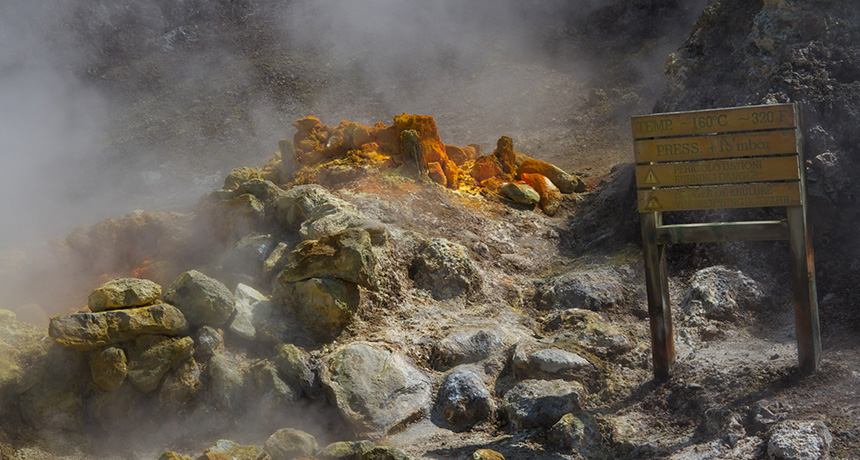Natural concrete keeps lid on Italian volcano
Scientists explain how ground rose 2 meters without bursting

SET IN CONCRETE Naturally occurring concretelike rock allowed the ground around the volcanic Campi Flegrei caldera in Italy to rise a couple meters without bursting, new research finds. Cracks in the nearby rock (shown) vent gas and heat from deep underground.
DamienOz/Flickr (CC BY-ND 2.0)






